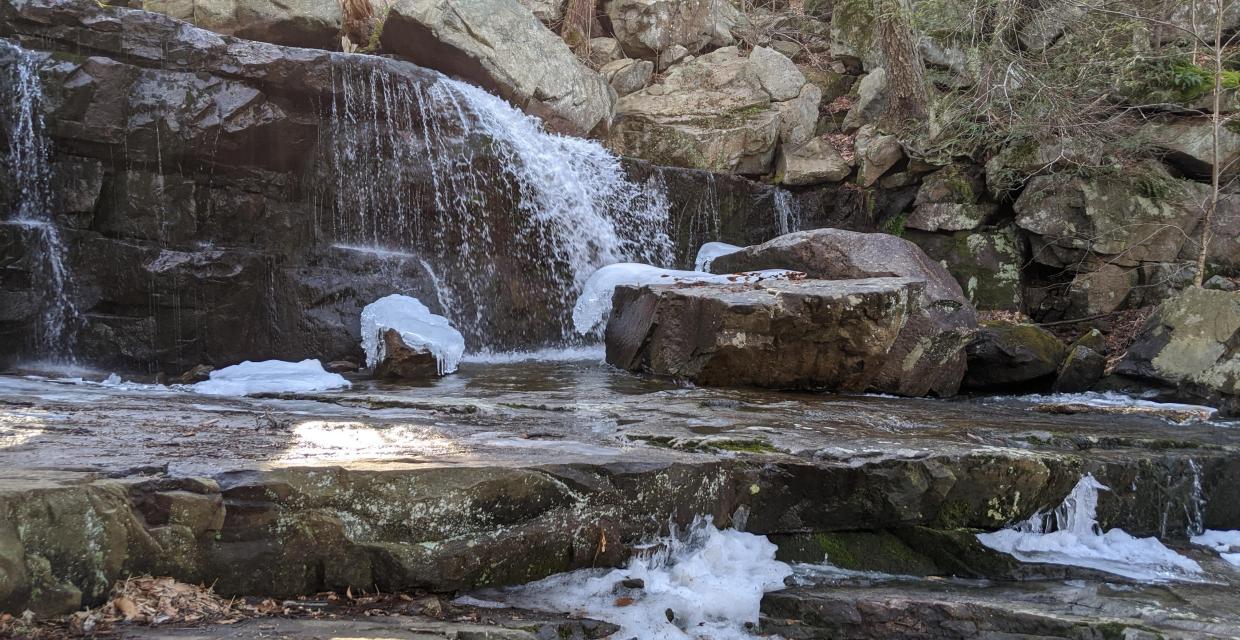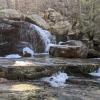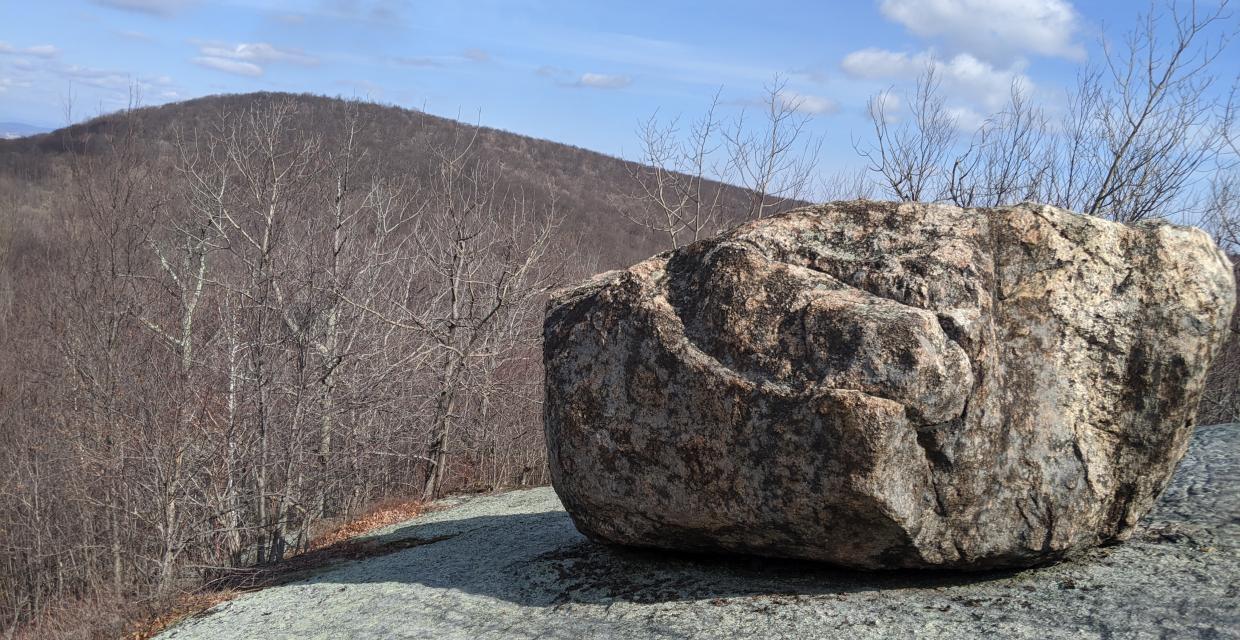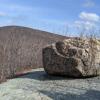Black Rock Forest in Cornwall, N.Y., features dramatic topography, numerous lakes and streams, and a high diversity of species and habitat, making it a valuable place for research opportunity as well as hikes. Located just north of Harriman and west of Storm King state parks, it functions as a 3,914-acre “living laboratory” dedicated to advancing the scientific understanding of the natural...
Hike Description:
Black Rock Forest in Cornwall, N.Y., features dramatic topography, numerous lakes and streams, and a high diversity of species and habitat, making it a valuable place for research opportunity as well as hikes. Located just north of Harriman and west of Storm King state parks, it functions as a 3,914-acre “living laboratory” dedicated to advancing the scientific understanding of the natural world through programs in research, education, and conservation. As a scientific field station that is also open to the public for day use, Black Rock Forest is an incredible resource for exploring and learning about nature in the Hudson Valley.
The Scenic Trail on the west side of the forest is a very rewarding out-and-back hike option for moderate effort. Co-aligned with the Highlands Trail, it’s a 1.35-mile (each way) trek that packs in a magnificent seasonal waterfall, diverse habitat, and views that stretch to the Catskills. It also features the work of the Trail Conference’s Hudson Nor’Westers Trail Crew, who have remediated several wet and/or eroded areas of the trail over the years.
You’ll find the trailhead on Old Mineral Springs Road, where there is pull-off parking for several cars. This road is owned and maintained by the town and clearly marks where parking ends. The Scenic Trail (white blazes)-Highlands Trail (teal diamond blazes) hike starts on an old woods road. Walk beyond the gate, and in just about a quarter mile, bear right to arrive at the Mineral Springs Waterfall—a lovely spot for both quiet meditation and a photo opp. Turn back 100 feet, and you’ll see the trail continuing to your right, up around the waterfall. You may see tall, black mesh fencing as you climb this section—a reminder that Black Rock Forest is an active research center. The fencing is in place to keep deer out and to encourage recovery of native species that have been trampled from overuse.
The trail skirts walls of rock as it climbs along the waterfall. Hikers are asked to remain on the trail and not venture near the falls to avoid both injury and the impacts of erosion. In an effort to create a safe experience and sustainable trail that will last decades, the Hudson Nor’Westers Crew built a beautiful stone staircase along this section in 2019.
Enjoy the view and the splendidly built trail, then continue your rolling ascent along the stream through hemlock groves, mountain laurel, and a young birch forest. Along the way you’ll encounter additional handiwork of the Nor’Westers Crew in the form of two stepping stone bridges. In little time, Jupiter’s Boulder will appear to your left, marking the turnaround point for this hike. Pausing at this glacier erratic, enjoy the views of Schunnemunk Mountain to your right, the Shawangunk Ridge beyond it, and the Catskill Mountains rising in the distance. Soak in this opportunity to connect with nature, turn back, and retrace your steps, following the white and teal blazes back to the trailhead.




The Scenic Trail on the west side of Black Rock Forest is a very rewarding out-and-back hike option for moderate effort. Co-aligned with the Highlands Trail, it’s a 1.35-mile (each way) trek that packs in a magnificent seasonal waterfall, diverse habitat, and views that stretch to the Catskills.
Hike Checklist:
Whether you are going for a day hike or backpacking overnight, it is good practice to carry what we call The Hiking Essentials. These essentials will help you enjoy your outing more and will provide basic safety gear if needed. There may also be more essentials, depending on the season and your needs.
The Essentials
Hiking Shoes or Boots
Water - Two quarts per person is recommended in every season. Keep in mind that fluid loss is heightened in winter as well as summer. Don't put yourself in the position of having to end your hike early because you have run out of water.
Map - Know where you are and where you are going. Many of our hiking areas feature interconnecting network of trails. Use a waterproof/tear-resistant Tyvek Trail Conference map if available or enclose your map in a Ziplock plastic bag. If you have a mobile device, download Avenza’s free PDF Maps app and grab some GPS-enhanced Trail Conference maps (a backup Tyvek or paper version of the map is good to have just in case your batteries die or you don't have service). Check out some map-reading basics here.
Food - Snacks/lunch will keep you going as you burn energy walking or climbing. Nuts, seeds, and chocolate are favorites on the trail.
Sunscreen and insect repellent
Rain Gear and Extra Clothing - Rain happens. So does cold. Be prepared for changing weather. Avoid cotton--it traps water against your skin and is slow to dry. If you are wearing wet cotton and must return to your starting point, you risk getting chills that may lead to a dangerous hypothermia. Choose synthetic shirts, sweaters and/or vests and dress in layers for easy on and off.
Compass - A simple compass is all you need to orient you and your map to magnetic north.
Light - A flashlight or small, lightweight headlamp will be welcome gear if you find yourself still on the trail when darkness falls. Check the batteries before you start out and have extras in your pack.
First Aid Kit - Keep it simple, compact, and weatherproof. Know how to use the basic components.
Firestarter and Matches - In an emergency, you may need to keep yourself or someone else warm until help arrives. A firestarter (this could be as simple as leftover birthday candles that are kept inside a waterproof container) and matches (again, make sure to keep them in a waterproof container) could save a life.
Knife or Multi-tool - You may need to cut a piece of moleskin to put over a blister, repair a piece of broken equipment, or solve some other unexpected problem.
Emergency Numbers - Know the emergency numbers for the area you're going to and realize that in many locations--especially mountainous ones, your phone will not get reception.
Common Sense - Pay attention to your environment, your energy, and the condition of your companions. Has the weather turned rainy? Is daylight fading? Did you drink all your water? Did your companion fail to bring rain gear? Are you getting tired? Keep in mind that until you turn around you are (typically) only half-way to completing your hike--you must still get back to where you started from! (Exceptions are loop hikes.)
Check the weather forecast before you head out. Know the rules and regulations of the area.
The Leave No Trace Seven Principles
Plan Ahead and Prepare
- Know the regulations and special concerns for the area you'll visit.
- Prepare for extreme weather, hazards, and emergencies.
- Schedule your trip to avoid times of high use.
- Visit in small groups when possible. Consider splitting larger groups into smaller groups.
- Repackage food to minimize waste.
- Use a map and compass to eliminate the use of marking paint, rock cairns or flagging.
Travel and Camp on Durable Surfaces
- Durable surfaces include established trails and campsites, rock, gravel, dry grasses or snow.
- Protect riparian areas by camping at least 200 feet from lakes and streams.
- Good campsites are found, not made. Altering a site is not necessary.
- In popular areas:
- Concentrate use on existing trails and campsites.
- Walk single file in the middle of the trail, even when wet or muddy.
- Keep campsites small. Focus activity in areas where vegetation is absent.
- In pristine areas:
- Disperse use to prevent the creation of campsites and trails.
- Avoid places where impacts are just beginning.
- Pack it in, pack it out. Inspect your campsite and rest areas for trash or spilled foods. Pack out all trash, leftover food and litter.
- Deposit solid human waste in catholes dug 6 to 8 inches deep, at least 200 feet from water, camp and trails. Cover and disguise the cathole when finished.
- Pack out toilet paper and hygiene products.
- To wash yourself or your dishes, carry water 200 feet away from streams or lakes and use small amounts of biodegradable soap. Scatter strained dishwater.
- Preserve the past: examine, but do not touch cultural or historic structures and artifacts.
- Leave rocks, plants and other natural objects as you find them.
- Avoid introducing or transporting non-native species.
- Do not build structures, furniture, or dig trenches.
- Campfires can cause lasting impacts to the backcountry. Use a lightweight stove for cooking and enjoy a candle lantern for light.
- Where fires are permitted, use established fire rings, fire pans, or mound fires.
- Keep fires small. Only use sticks from the ground that can be broken by hand.
- Burn all wood and coals to ash, put out campfires completely, then scatter cool ashes.
- Observe wildlife from a distance. Do not follow or approach them.
- Never feed animals. Feeding wildlife damages their health, alters natural behaviors, and exposes them to predators and other dangers.
- Protect wildlife and your food by storing rations and trash securely.
- Control pets at all times, or leave them at home.
- Avoid wildlife during sensitive times: mating, nesting, raising young, or winter.
Be Considerate of Other Visitors
- Respect other visitors and protect the quality of their experience.
- Be courteous. Yield to other users on the trail.
- Step to the downhill side of the trail when encountering pack stock.
- Take breaks and camp away from trails and other visitors.
- Let nature's sounds prevail. Avoid loud voices and noises.
The Trail Conference is a 2015 Leave No Trace partner.
(c) Leave No Trace Center for Outdoor Ethics: www.LNT.org.


